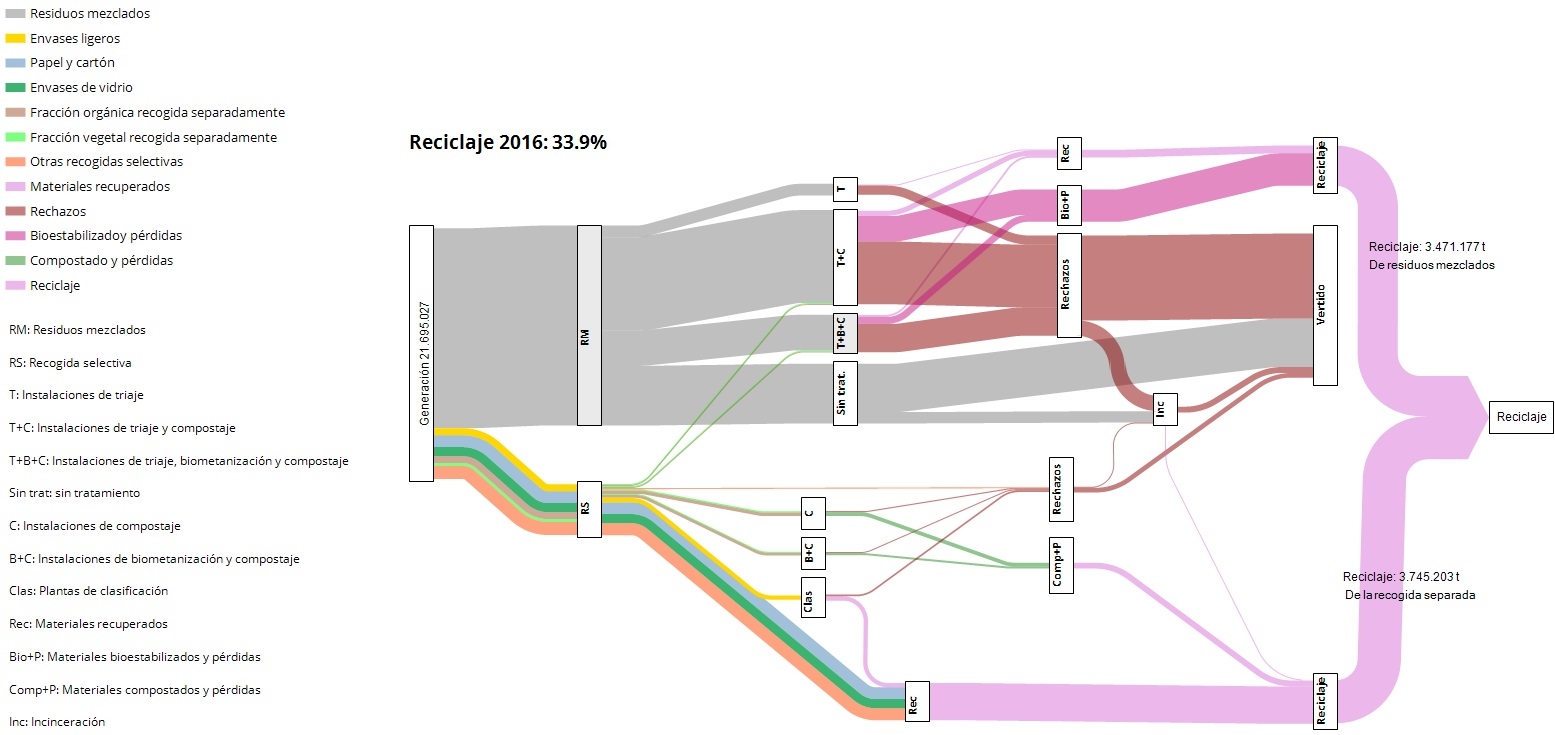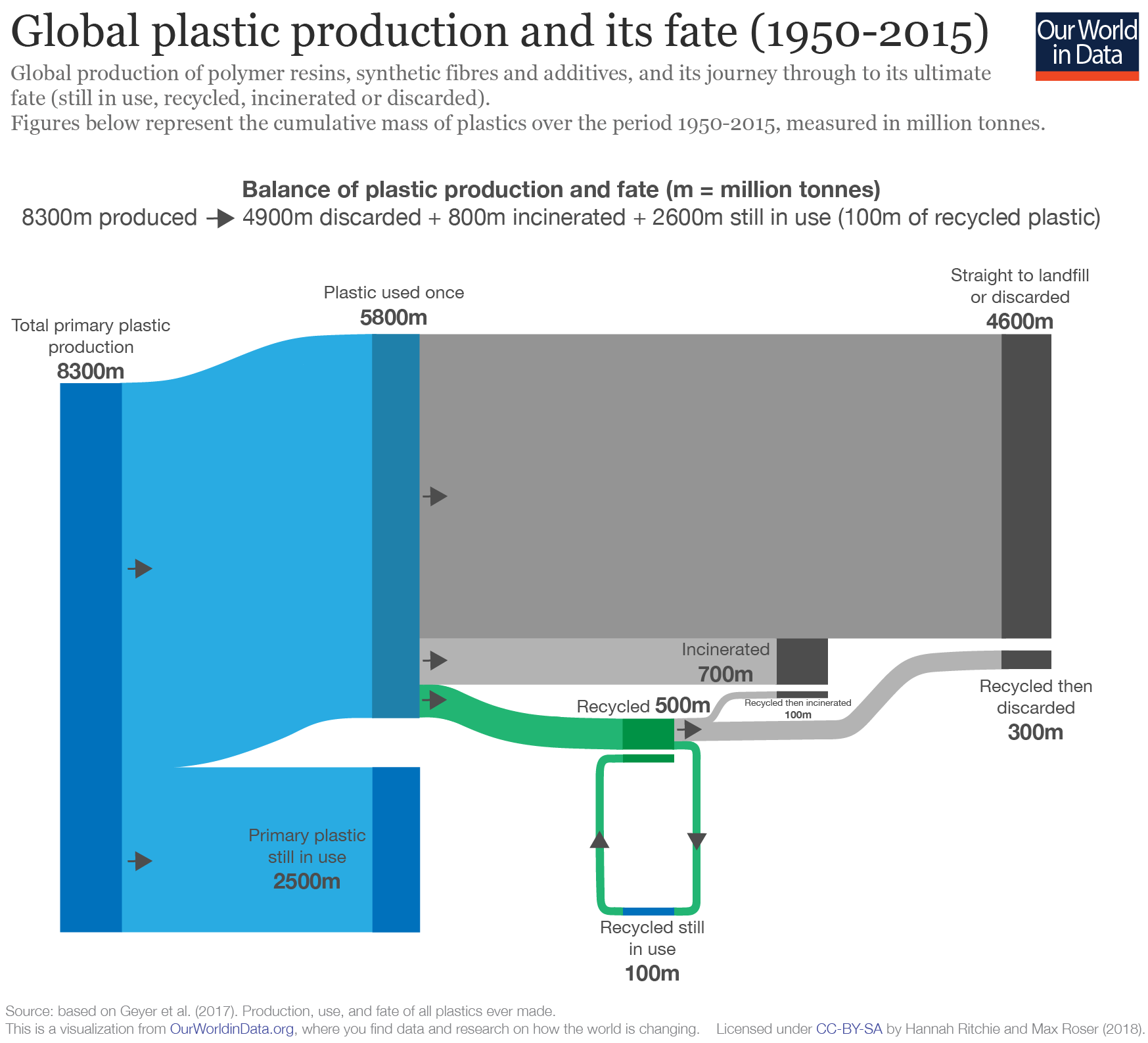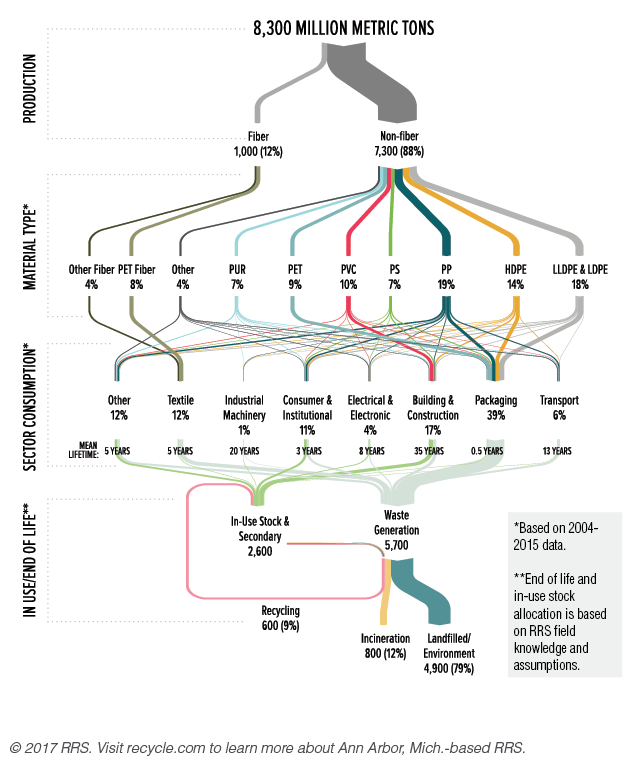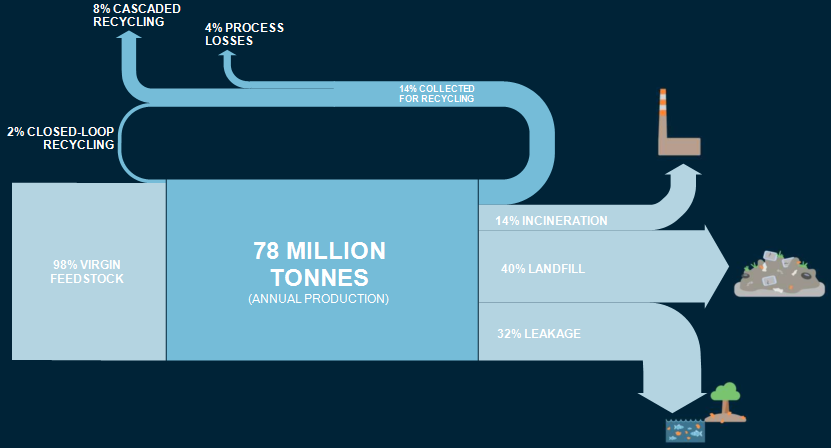An interesting blog post titled ‘Cuando las cuentas no cuentan’ (which I would figuratively translate as ‘When the numbers don’t match’) by Sergio Sastre over at the ‘Residuos Profesional’ blog.
Looking in detail at the official municipal solid waste recycling numbers for all 17 autonomous communities in Spain, published by the Environment Ministry (Ministerio para la Transición Ecológica – MITECO) for 2016, Sergio and his team found that there are discrepancies in the data, and that data quality needs improvement.
The overall recycling rate for municipal solid waste (MSW) in Spain is 33.6% … still far from the 2020 goal to reach a 50% recycling rate.
This Sankey diagram shows the breakdown of waste streams.
Flows are in tonnes per year. Of the overall 21.7 million tonnes of MSW generated in Spain, only some 7.2 million tonnes were recycled in 2016 (pink streams). A large chunk if household waste is mixed (grey stream, residuos mezclados, RM), while only a quarter is collected separately (colored streams in the lower part of the figure, recogida selectiva, RS).
Some material can be recovered from the mixed waste stream at sorting facilities and in composting plants or biogas digestors.



